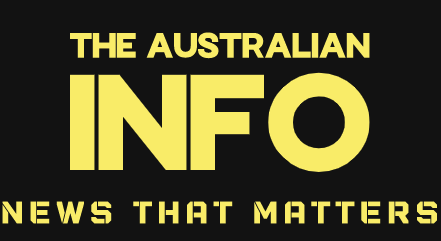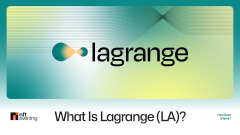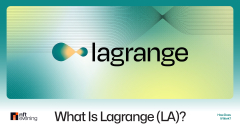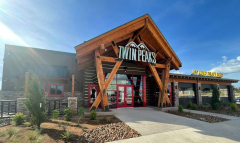In the booming era of AI and blockchain, the question is no longer “What result does AI produce?” but rather “How can we trust that the result is correct?” — and that’s exactly what Lagrange aims to solve. As a pioneer in decentralized proving infrastructure, Lagrange leverages Zero-Knowledge (ZK) technology to verify everything from AI inferences and cross-chain data to smart contract queries. Recently listed on Binance Spot, Lagrange (LA) is drawing global attention. So, what makes this project stand out? Let’s dive in and find out.
Lagrange Overview
Lagrange is a next-generation blockchain infrastructure protocol designed to bring verifiability to the core of AI and Web3. Built as the first Actively Validated Service (AVS) on EigenLayer, it leverages Ethereum’s restaking security to offer decentralized, scalable, and efficient zero-knowledge (ZK) proof generation.
Learn more: Lagrange (LA) will be Listed on Binance HODLer Airdrops
Unlike traditional ZK rollup solutions, Lagrange introduces the world’s first infinite proving layer by combining two core components: a decentralized ZK Prover Network and a hyper-parallel ZK Coprocessor. This unique design enables advanced, verifiable computation for use cases like AI inference, cross-chain messaging, and rollup verification.
Lagrange also pioneers verifiable databases and relational queries across blockchains—allowing dApps, DeFi, gaming, DAOs, and even AI systems to access and verify multi-chain data like a traditional database, but with blockchain-grade security and decentralization.
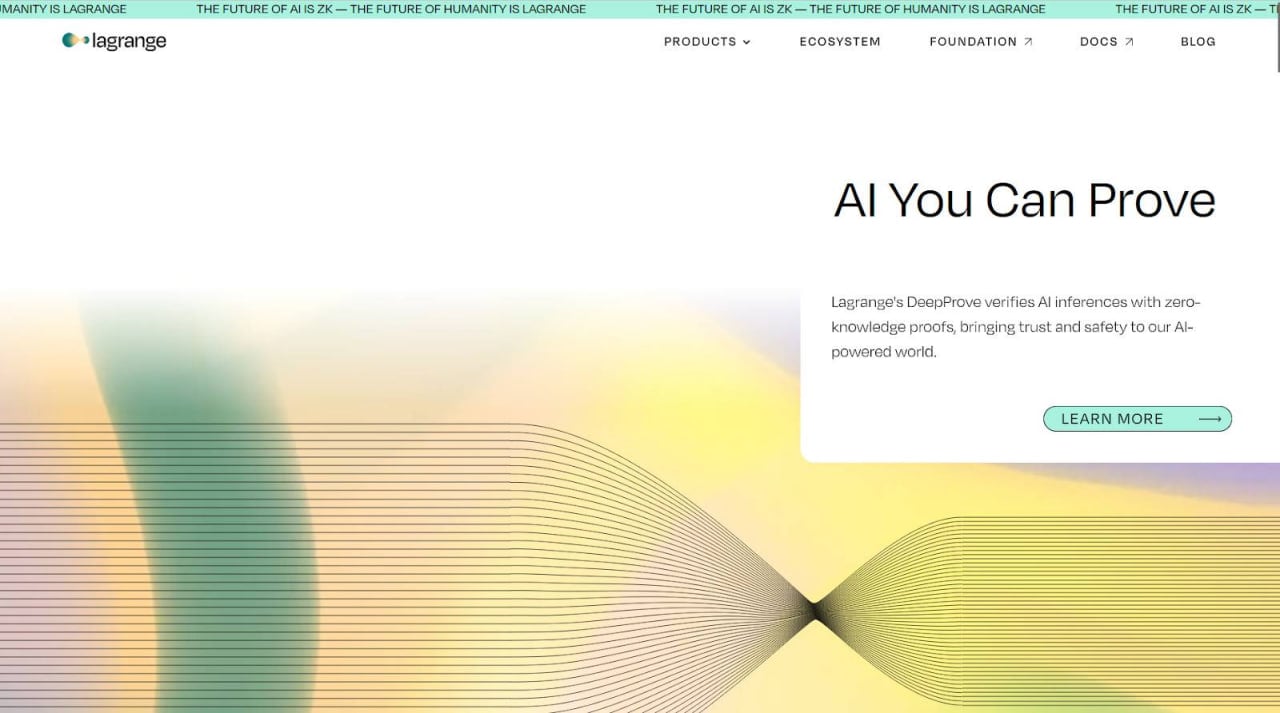
Source: Lagrange
Key Product of Lagrange
ZK Prover Network
Lagrange operates the first production-ready ZK prover network on EigenLayer, enabling proof generation for a wide range of use cases including AI, rollups, and cross-chain messaging.
Its modular and scalable architecture, backed by over 85 top-tier operators, ensures unlimited scalability, high proof liveness, and cost efficiency via the innovative DARA (Double Auction Resource Allocation) mechanism. With a simple integration interface, partners can easily outsource complex proof generation and focus on building their core products.
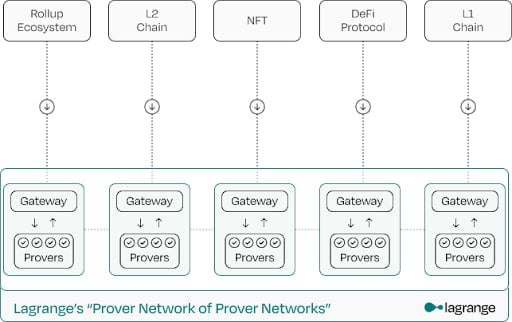
Source: Lagrange
DARA – Double Auction Resource Allocation
DARA is Lagrange’s core mechanism for efficiently allocating proving resources between requesters and providers. It ensures:
- Optimal resource utilization, minimizing system waste.
- Truthful bidding, via threshold-based payments.
- Fraud and collusion resistance, through an all-or-nothing rule.
- Scalable, congestion-free performance at large scale.
- Financial sustainability, with orders matched only when bid prices exceed proof costs — no subsidies needed.
Lagrange ZK Prover Architecture and Advantages
Lagrange employs a modular architecture with independent subnets, forming a “network of prover networks” with dedicated bandwidth. This design enables any blockchain or application to connect flexibly without I/O constraints.
Key Highlights:
- Flexible modular architecture: Each subnet serves a specific application, eliminating congestion.
- Support for diverse proof systems: Compatible with Boojum, Plonky3, Plonky2, and more.
- High availability and cost efficiency: Operated by 85+ EigenLayer operators, leveraging the Double Auction Resource Allocation (DARA) mechanism to optimize performance and cost.
- Production-ready integration: Seamless adoption through a single unified interface, removing technical barriers for partners.
ZK Coprocessor
The ZK Coprocessor is an off-chain computation module developed by Lagrange, enabling large-scale data processing and generating on-chain verifiable ZK proofs. It is the first ZK coprocessor to support SQL queries, allowing smart contracts to execute complex queries in a transparent and efficient manner.
Its operation involves three key steps:
- Preprocessing: Transforms blockchain data into a ZK-friendly Verifiable Database.
- Parallel Computation: Utilizes a decentralized prover network to process data using a hyper-parallel model.
- Querying: Enables smart contracts to query the data directly, or across chains, at low cost.
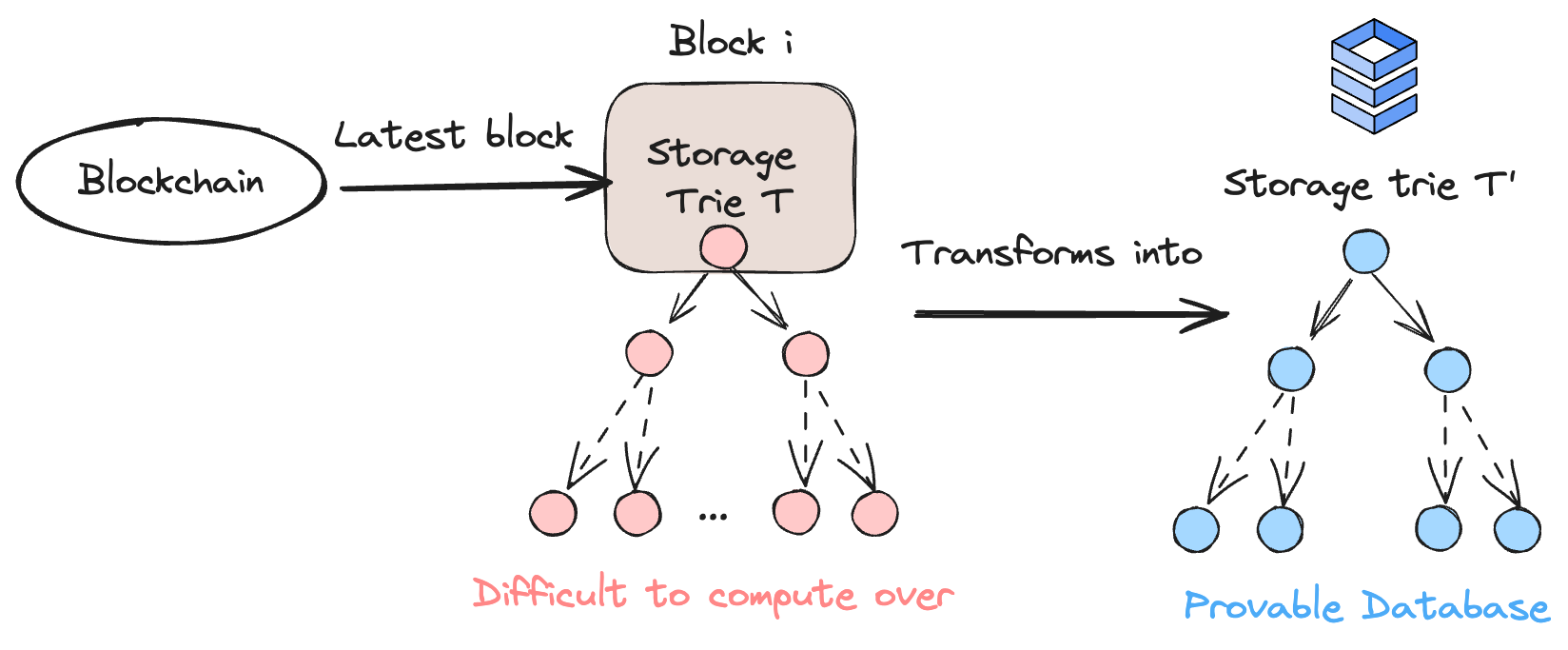
Source: Lagrange
Key Highlights:
- High speed enabled by flexible, distributed computation.
- Massive scalability: Supports queries over 50,000+ blocks and millions of storage slots per block.
- Efficient updates: Only recomputes proofs when data changes, optimizing resource usage.
DeepProve
DeepProve is the fastest zkML solution developed by Lagrange, enabling rapid and accurate verification of AI inference using zero-knowledge (ZK) proofs. It allows users to prove that an AI model was executed correctly, with the right inputs and outputs—regardless of where or how it was run.
Source: Lagrange
Key Features:
- Exceptional speed: Up to 1000x faster proof generation and 671x faster verification compared to baseline methods.
- Model integrity protection: Ensures models haven’t been tampered with, allowing for auditing and safeguarding parameters.
- Trust without compromise: Every inference comes with a proof—no need to sacrifice control, transparency, or data privacy.
Lagrange offers a comprehensive infrastructure platform that enhances scalability and transparency for Web3 and AI applications. With its ZK Prover Network and ZK Coprocessor, it enables fast, efficient, and easily integrated proof generation for rollups, cross-chain data queries, and off-chain computation. DeepProve further extends this capability by enabling cryptographic verification of AI outputs, laying the foundation for a new generation of trustless, verifiable, and reliable applications.
LA Tokenomics
Token Metrics
- Name: Lagrange
- Token: LA
- Blockchain: Ethereum, Arbitrum, Base, Optimism, Polygon, Solana, Scroll, Gnosis
- Total Supply: 1,000,000,000 $LA
LA Token Distribution
Source: Lagrange
At the Token Generation Event (TGE), 19.3% of the total token supply will be unlocked, including 10% for the public airdrop, 4.3% for the Foundation, and 5% for the community and ecosystem. Additionally, a fixed 4% annual emission rate is allocated to provers based on the volume of proof generation.
| Category | Allocation (%) | Unlock Schedule |
| Community & Ecosystem | 34.78% | 5% TGE, 6-month cliff, then linear unlock over 48 months |
| Contributors | 25.39% | 12-month cliff, then linear unlock over 24 months |
| Investors | 18.54% | 12-month cliff, then linear unlock over 24 months |
| Foundation | 11.30% | 4,3% TGE, 6-month cliff, then linear unlock over 12 months |
| Airdrop | 10% | Fully unlocked at TGE |
LA Token Utilities
LA is the core utility token of Lagrange, serving purposes in fee payments, staking/delegation, and DAO governance.
- Fee Payments: Users pay proof generation fees in LA, ETH, or USDC, but provers are always rewarded in LA → creating real buy pressure.
- Staking/Delegation: Provers stake LA as collateral. Token holders can delegate to earn rewards and help reduce circulating supply.
- Subsidy & Emissions: The network uses a 4% annual inflation rate to subsidize provers and ensure smooth operations.
- Governance: LA holders have voting rights in the DAO, influencing protocol decisions.
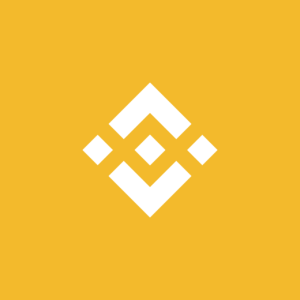
The Lagrange Roadmap: AI’s Next Frontier
Source: Lagrange
Lagrange emphasizes its mission to shape the future of verifiable AI through its zkML technology, DeepProve—a system that enables cryptographic and trustworthy proof of AI inferences.
The 2025 roadmap focuses on:
- Expanding proving capabilities for major AI models like LLaMA, Claude, and Gemini
- Supporting new proof types, including proofs of training, fairness, fine-tuning, and reasoning
- Accelerating computation through GPU, custom silicon, and cloud integrations
- Enhancing parallel proving for greater scalability and speed
- Enabling private inferences for sensitive sectors such as finance, healthcare, and defense.
Read more: Meme Coins vs AI Tokens: The Race Toward the Next Big Narrative
Lagrange Core Team
- Ismael Hishon-Rezaizadeh (CEO & Co-founder): Formerly with John Hancock and Renegade Partners, he is a graduate of McGill University.
- Kashish Shah (Founding Engi
